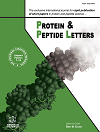
Full text loading...
Tissue Factor (TF) is a crucial transmembrane glycoprotein that triggers blood coagulation upon vascular or tissue injury by binding to plasma factors VII and VIIa. In recent years, the demand for TF has rapidly increased due to its pivotal role in preoperative coagulation tests. However, large-scale production of TF remains challenging despite successful recombinant expression, as incorrect post-translational modifications adversely affect TF activity.
This study aims to investigate the role of post-translational modifications, specifically N-glycosylation, in TF activity and stability. Additionally, it explores strategies to enhance TF production by reducing its degradation through genetic modulation.
We compared TF activity derived from human cells and E. coli to assess the impact of post-translational modifications. Furthermore, we examined the effect of N-glycosylation on TF function. To address TF degradation, we knocked out the HRD1 gene, a key component of the endoplasmic-reticulum-associated degradation (ERAD) pathway, and evaluated its impact on TF stability and activity.
TF produced in human cells exhibited higher activity than TF expressed in E. coli, emphasizing the importance of post-translational modifications. Specifically, N-glycosylation was found to influence TF activity and stability. Additionally, we observed that knocking out the HRD1 gene effectively reduced TF degradation without compromising its activity.
Our findings underscore the crucial role of N-glycosylation in TF function and stability. Moreover, the modulation of the ERAD pathway through knocking out HRD1 presents a promising approach for enhancing TF production. These insights could contribute to the large-scale manufacturing of functionally active TF for clinical and research applications.

Article metrics loading...

Full text loading...
References


Data & Media loading...

